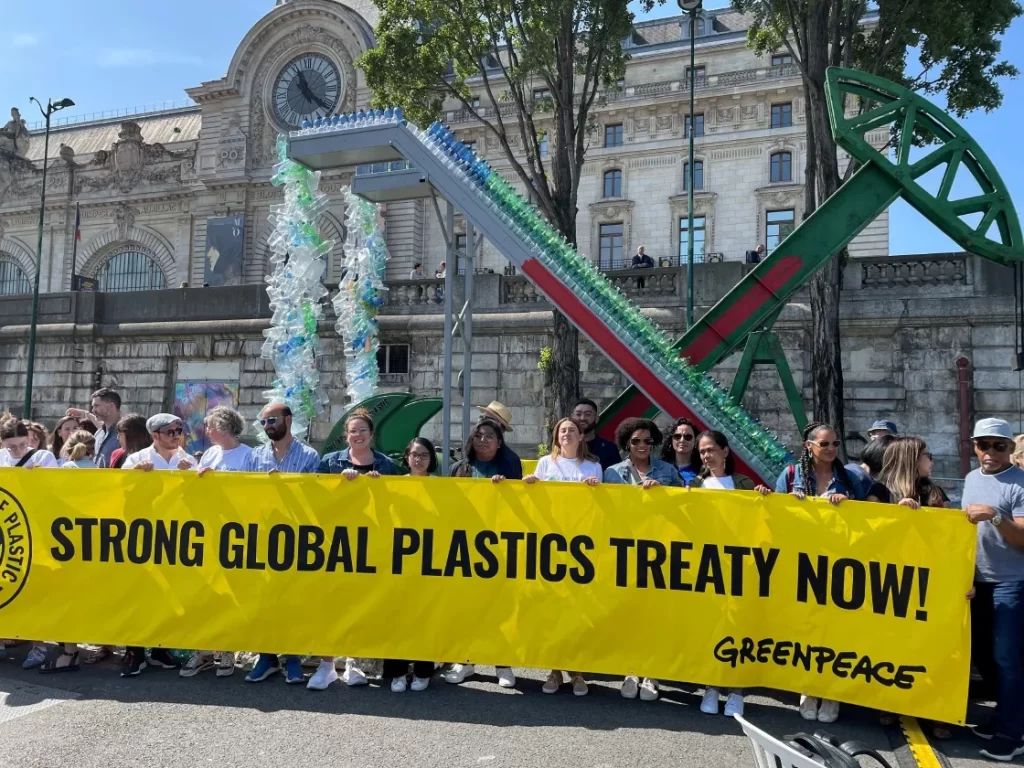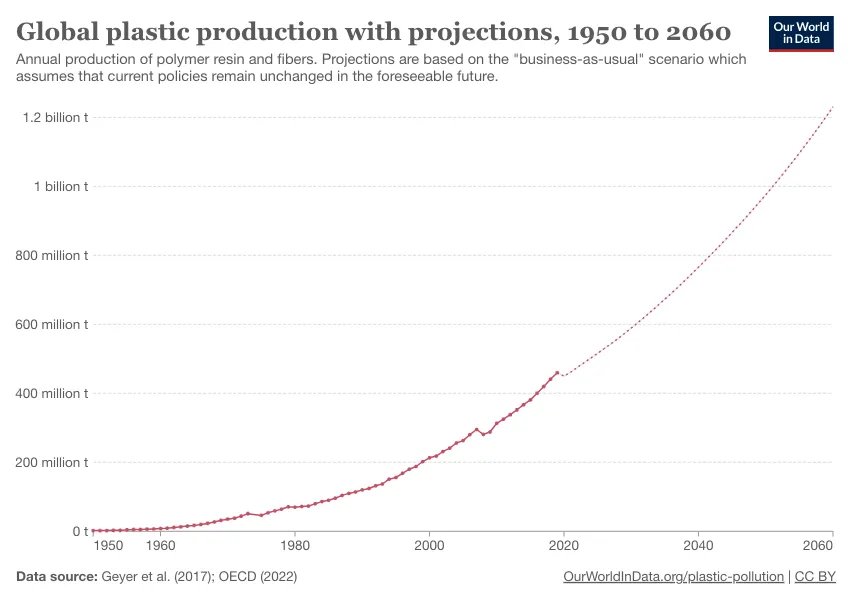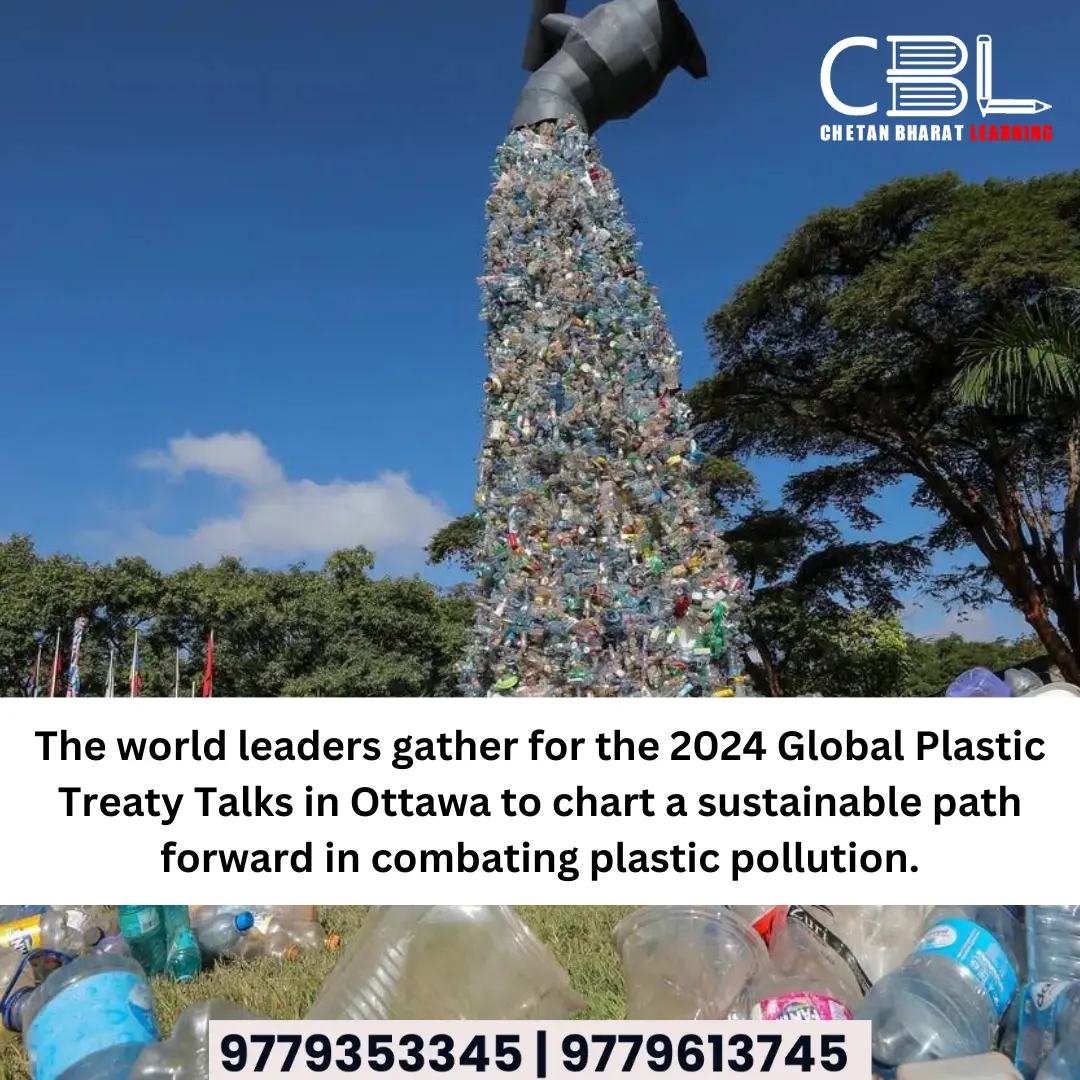Why in the news?
- Global Summit in Ottawa: World leaders convened in Ottawa, Canada, this week to assess advancements in crafting the first-ever worldwide treaty aimed at curbing the soaring plastic pollution.
- The treaty is projected to be completed by the end of 2024.
- Historical Significance: If the members negotiate and agree upon the treaty, it could emerge as the most significant accord addressing climate-warming emissions and environmental conservation since the landmark Paris Agreement of 2015.

Background
- In 2022, countries worldwide decided at the UN Environmental Assembly to create a binding agreement by the end of 2024 to tackle the global plastic pollution problem.
- The treaty aims to deal with plastics through their lifecycle. From creation, all the way through their use, and finally to their disposal.

United Nations Environment Assembly (UNEA):
| Aspect | Description |
| Creation | Established in June 2012 by the United Nations General Assembly (UNGA) Resolution 67/213 |
| Purpose | To serve as the highest-level global environmental decision-making body within the United Nations system |
| Functions | – Sets global environmental policies and priorities |
| – Provides guidance and recommendations on environmental issues to UN member states and stakeholders | |
| – Monitors and assesses progress in the implementation of international environmental agreements | |
| – Convenes biennial meetings to discuss and address pressing environmental challenges | |
| Membership | Open to all 193 UN member states and observers, including representatives from civil society and NGOs |
| Decision-Making | Decisions are made by consensus among member states, with resolutions adopted by a majority vote |
| Secretariat | Supported by the United Nations Environment Programme (UNEP) Secretariat |
Need for the treaty
The treaty can establish international standards and regulations to reduce plastic waste and mitigate its environmental impact.
Problems with plastic:
- Source of Pollution: Plastic waste is a worldwide problem, contaminating land and water, while also contributing to greenhouse gas emissions during production.
- Carbon Emission Contribution: The plastic industry currently contributes 5% of global carbon emissions, a figure projected to rise to 20% by 2050 if current practices persist.
- Rising Production Levels: Plastic production is anticipated to triple by 2060 unless the treaty implements production restrictions, as some suggest. The majority of new plastic is made from petroleum.

What can the Plastic Treaty entail?
- Assistance for Developing Nations: The treaty might outline ways for wealthier countries to support poorer ones in meeting their plastic reduction goals.
- Ban on Specific Plastics: It could prohibit certain types of plastic, plastic products, and chemical additives. Thus, setting legally binding targets for recycling and recycled content in consumer goods.
- Chemical Testing Mandate: The treaty might require testing of certain chemicals used in plastics.
- Transition Support: It could include provisions for a smooth transition for waste pickers and workers in developing countries.
Challenges to Negotiations in Ottawa
- Previous rounds of negotiations, held in Punta del Este, Uruguay, Paris, and Nairobi, have revealed divisions among countries on key issues.
- At the Nairobi talks in November 2022, the draft treaty grew from 30 to 70 pages as some nations pushed to include objections to more ambitious measures such as production limits and phase-outs.
- With final negotiations scheduled for December in Busan, South Korea, countries face pressure to reach common ground amidst these differences.
What do countries Want in the Treaty?
- Demands of Like-Minded Countries:
- Several plastic and petrochemical-producing nations, such as Saudi Arabia, Iran, and China, oppose mentioning production limits in the treaty.
- These countries form a group known as the Like-Minded Countries.
- Demands of High-Ambition Coalition:
- It consists of 60 nations including EU countries, island nations, Japan, and the UAE. High-Ambition Coalition aims to eliminate plastic pollution by 2040.
- They advocate for common, legally binding provisions to restrict and decrease the production and consumption of primary plastic polymers to sustainable levels.
- Additionally, they propose measures like phasing out problematic single-use plastics and banning certain chemical additives with potential health risks.
- Arguments of Major Petrochemical Producers:
- They argue that implementing production caps would result in higher prices for consumers.
- The treaty should focus on addressing plastics after their manufacturing.
- Their focus is on promoting plastic reuse/recycling and developing markets for burning plastics as fuel.
- They advocate for voluntary disclosure of chemicals used in production.
- Demands of Corporate Brands:
- Over 200 consumer-facing companies like Unilever, PepsiCo, and Walmart form the Business Coalition for a Plastics Treaty.
- Despite reliance on plastic packaging, they support a treaty that:
- Includes production caps, use restrictions, and phase-outs.
- Promotes reuse policies and product design requirements.
- Implements extended producer responsibility and improved waste management.


Leave a Reply
You must be logged in to post a comment.